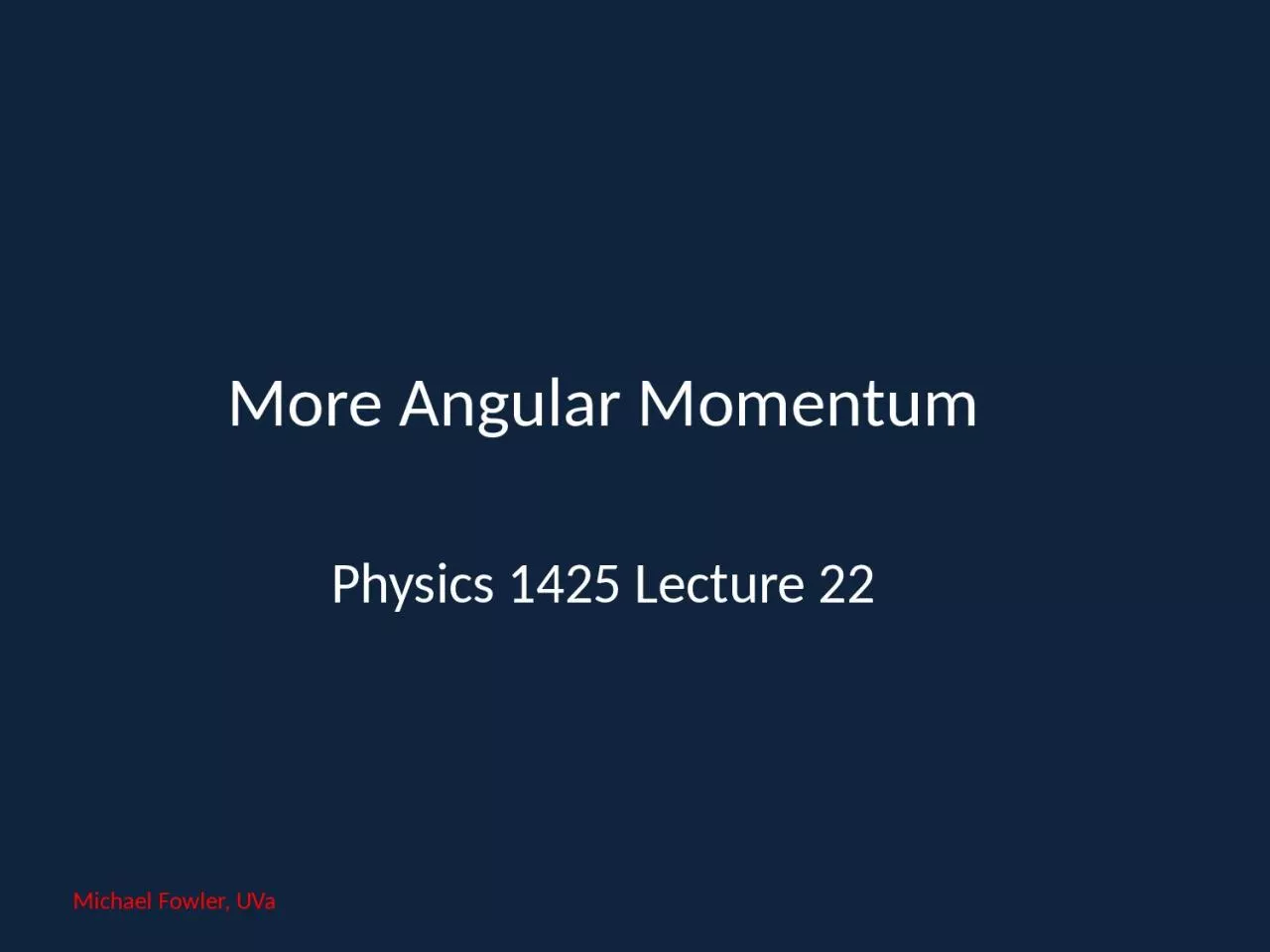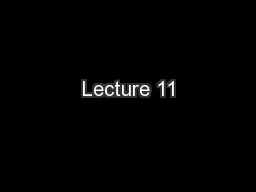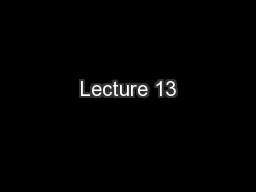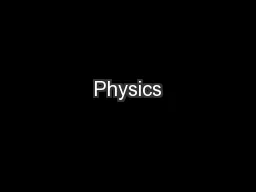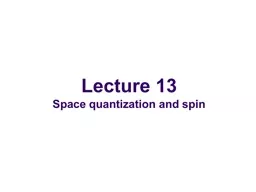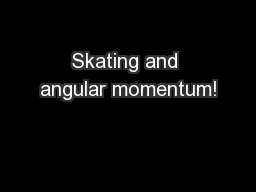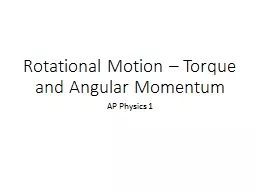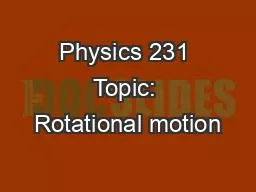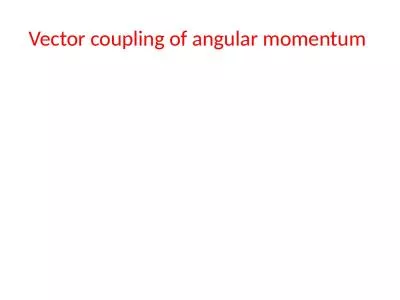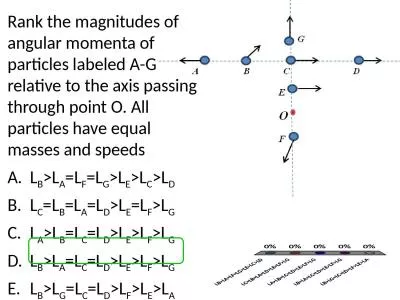PPT-More Angular Momentum Physics 1425 Lecture 22
Author : jovita | Published Date : 2023-09-20
Michael Fowler UVa Torque as a Vector Suppose we have a wheel spinning about a fixed axis then always points along the axisso points along the axis too If we want
Presentation Embed Code
Download Presentation
Download Presentation The PPT/PDF document "More Angular Momentum Physics 1425 Lectu..." is the property of its rightful owner. Permission is granted to download and print the materials on this website for personal, non-commercial use only, and to display it on your personal computer provided you do not modify the materials and that you retain all copyright notices contained in the materials. By downloading content from our website, you accept the terms of this agreement.
More Angular Momentum Physics 1425 Lecture 22: Transcript
Download Rules Of Document
"More Angular Momentum Physics 1425 Lecture 22"The content belongs to its owner. You may download and print it for personal use, without modification, and keep all copyright notices. By downloading, you agree to these terms.
Related Documents

